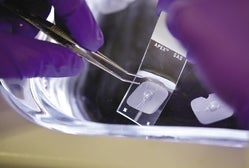Product Development Key To Mass. Manufacturing, Forum Told
Central Massachusetts manufacturers should focus on product development as large firms shift operations out of the Bay State, employers and industry experts said Wednesday.
“This area is known for innovation, for discovery, for new ideas,” said Ralph Lambalot, division vice president at AbbVie Bioresearch Center, in Worcester.
Massachusetts manufacturers can’t control the state’s high electric and health care costs and its distance from the geographic center of the country, said Rand Whitney Container president Nick Smith, who said all these factors make other areas more appealing for large-scale production.
Speakers at the forum, sponsored by the Worcester Regional Research Bureau, said Central Massachusetts should instead capitalize on its educational resources and make sure the region has enough highly-skilled workers to serve as a product incubator for large companies.
Lambalot pointed to the development of the rheumatic arthritis drug Humira in Worcester in the 1990s as an example of the role the region could play in large manufacturing going forward. He said companies will be inclined to keep development work in Massachusetts if the region remains the fastest at turning around prototypes.
Creating an educated workforce falls largely to people like Shelia Harrity, the principal of Worcester Technical High School. In response to the explosion of advanced and precision manufacturing, Worcester Tech offered its first ever Advanced Placement course in 2008 to just seven students. Today, more than 200 are enrolled in AP courses.
Worcester Tech was selected this year by the U.S. Department of Education as a blue-ribbon school for outstanding achievement.
Most of the production that remains in Central Massachusetts will come from small firms, said Jack Healy, director of operations for the Massachusetts Manufacturing Extension Partnership. More than half of the region’s workers are employed by companies with less than 100 employees, he said.
“Manufacturing is here and growing,” Healy added, “and will continue to grow.”
Read more













0 Comments